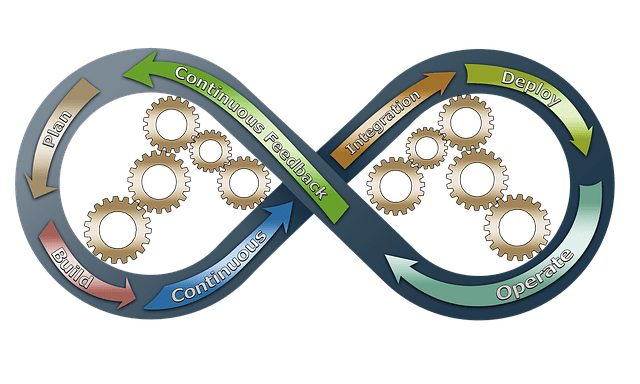The word “agile” is widely used, but the exact meaning is often interpreted differently depending on areas of expertise. For many, it means freely able to move and accomplish. In addition, it means implementing change more quickly and becoming a process to follow. However, this creates problems when regarded as a mechanism rather than a culture change. Agile change management must be a way of thinking and behaving to be fully effective.
Agile in terms of change management needs to be an initiative that allows time for producing the business case, alongside strategies for managing the approach, quality and people. Too often, it is seen only as the way to deliver the change in the fastest means possible.
Why we need Agile methods
We now live in uncertain times, which leaves the old methods of starting and managing a plan over several years highly inappropriate. Instead, we need to be more agile in our approach. So it is essential to begin with ideas of what you want to achieve and be open and flexible about how you make it happen. Flexibility gives an advantage allowing you to respond quickly to changes in markets, customers, supplier requirements and system innovations.
Agile project management methods have rightly grown in adoption. They offer a logical answer to handle uncertainty and provide the ideal opportunity to start small and adapt without having a set plan for the whole project at the outset. Agile allows for uncertainty without the need to commit all resources when you may not have identified the right solution yet. Instead, you can successfully create part of the solution, try it out, get feedback, assess effectiveness, and then decide what element of your overall solution to deliver next. With as high as 79% of change initiatives failing, the cost to businesses can be high. Agile methods reduce the risk of failure and support recommendations to regularly monitor progress and achievement through projects that cover extended periods.

Agile change management
This is an iterative approach in contrast to the waterfall approach, which delivers change once every element is complete. But delivering results early in the lifecycle helps fund further deliveries throughout the change initiative. Consequently this allows companies to see an earlier return on investment. Traditional methods such as ‘waterfall’ see significant and potentially large changes, involving substantial amounts of work packaged to need one change management activity. This can be difficult for employees. It can cause resistance issues and require many amendments to the business in one go.
The Agile approach creates smaller but more frequent changes to business functionality. It allows for greater time to adapt and become more attuned to change culture, with smaller shockwaves rippling through the workforce.
Agile change management is an extension of Agile development methodologies, including AgilePM, Scrum and SAFe, that frequently deliver tangible change in the form of new functionality and features. They set out how best to create a ‘production line’ of evolution—partnering with change management activities. It delivers from each increment within the Agile development plan.
Achieving the change
Traditional change management activities have to speed up, to manage the change of frequency generated by Agile methods. Therefore, organisations need to embrace and foster a robust approach to leading staff through change. They should also develop strategies to handle the required mini-change waves. Each mini-change comprises critical elements that are needed as part of the change process to support people. In addition, the changes are inter-related, contributing to their successful incorporation within the business and establishing new ways of working.
Let’s take a closer look at the processes within the Agile change tiers –
Scope
What has to change to achieve the project deliverable? Who is affected and who needs to be involved? Sharing information is key to the success of Agile change management. Those responsible for project delivery and those responsible for creating the new ways of working must work closely.
Stakeholder Analysis and Impact Assessment
Identify who must change their ways of working. Understanding the tangible delivery changes and assessing the tactical impact of changes to processes, data, metrics, and standards is crucial.
Change Message
Question who needs to know about the change. For instance, will suppliers, customers and staff need different information about the change? The manager establishes key messages and how they should be updated as the changes progress.
Change Plan
Identify and capture within the change plan change activities that enable those impacted to participate in the change.
Training
Supporting those transitioning to the new way of working is essential. Carry out readiness assessments and provide training or support to ensure people can continue as efficiently as possible. Staff reluctance and resistance are significant hurdles to successful project delivery. Therefore, it is critical to ensure people feel valued and have time to make the required changes.
Leadership
It is essential to choose the right leaders for the project. A good manager does not always equate to a good leader. Those charged with leading and implementing change must possess the necessary soft and hard skills to manage people and projects. Consider change management training or enlisting the help of a change management expert.
Automate and simplify
The frequency of change demanded by the Agile change environment makes it wise to automate as many activities as possible. Practices that are simple to understand and easy to carry out contribute to an agile process. People can perform them quickly and repeatedly in the iterative nature of an Agile process.
Avoid missing critical issues by creating a list of stakeholders as a reminder at each step. Implement change through small efforts and create a set of standard questions for each new phase. Do not re-evaluate every area or start from scratch for each wave.
Present the change plan as a story to users and appeal to your Agile colleagues. Inform, respect and encourage the workforce on board. Transition from waterfall-style project management to Agile may require external support but is an effective way to move forward.

